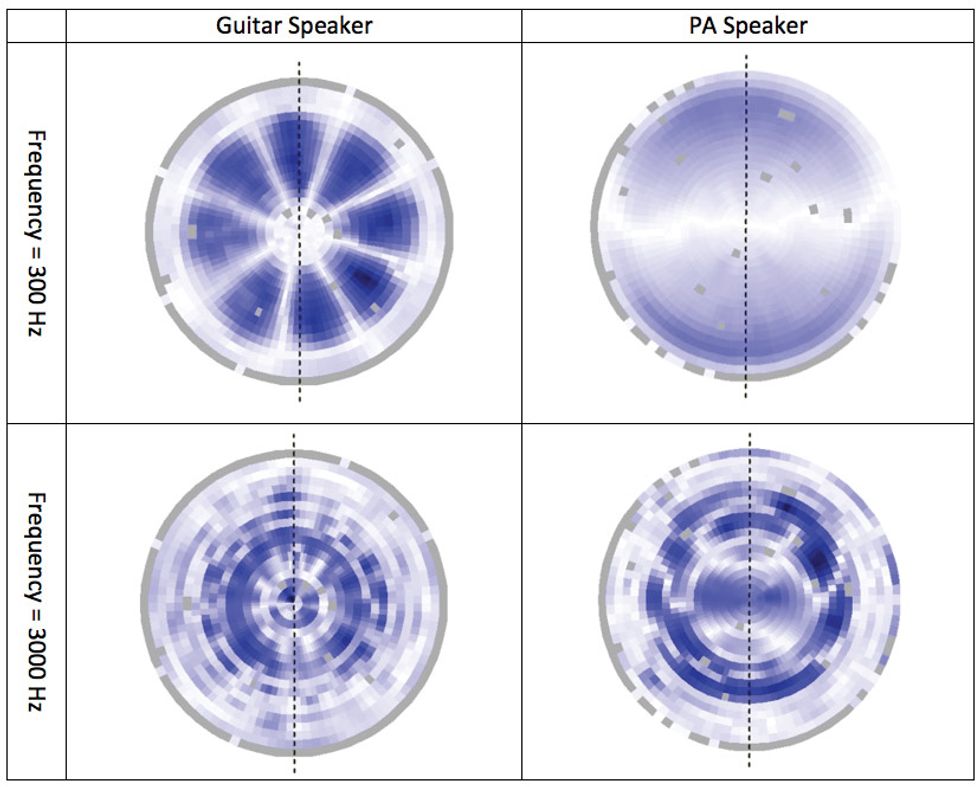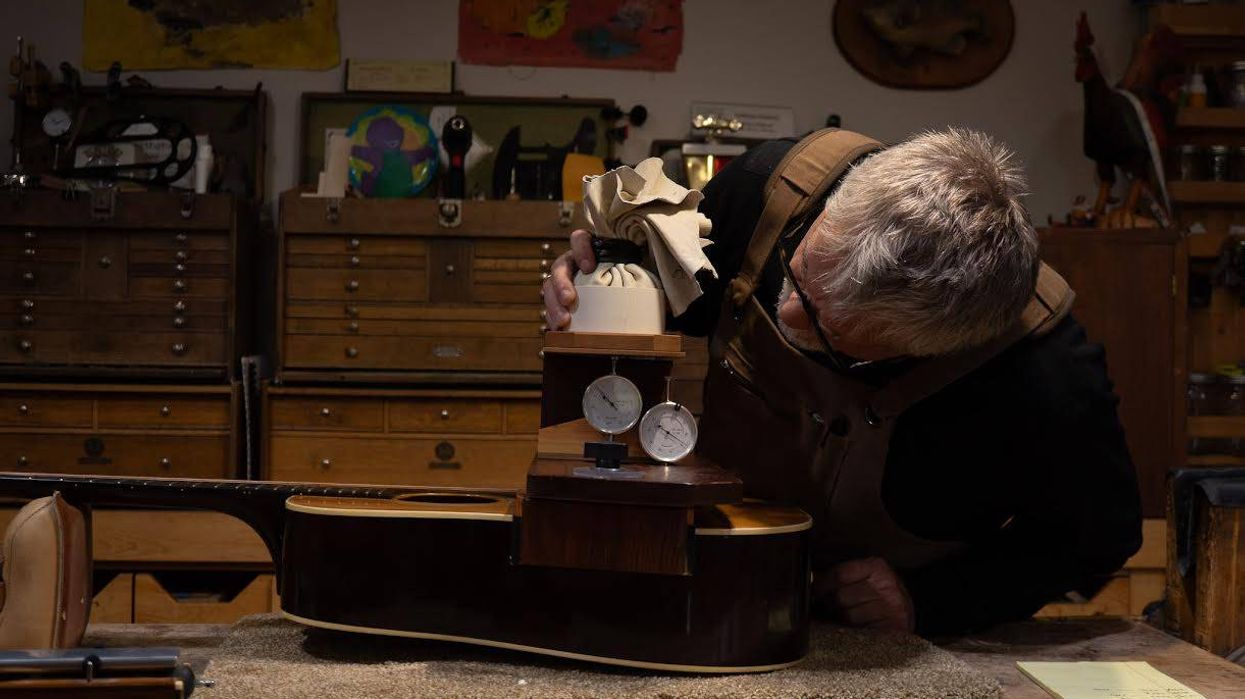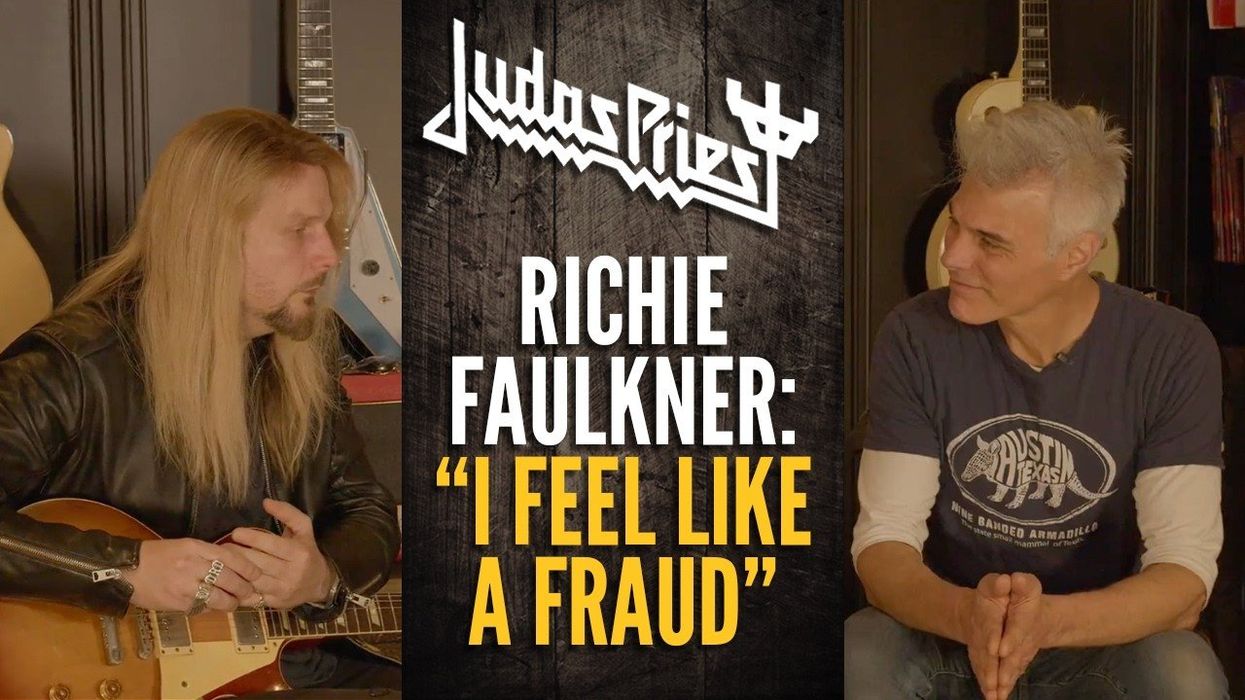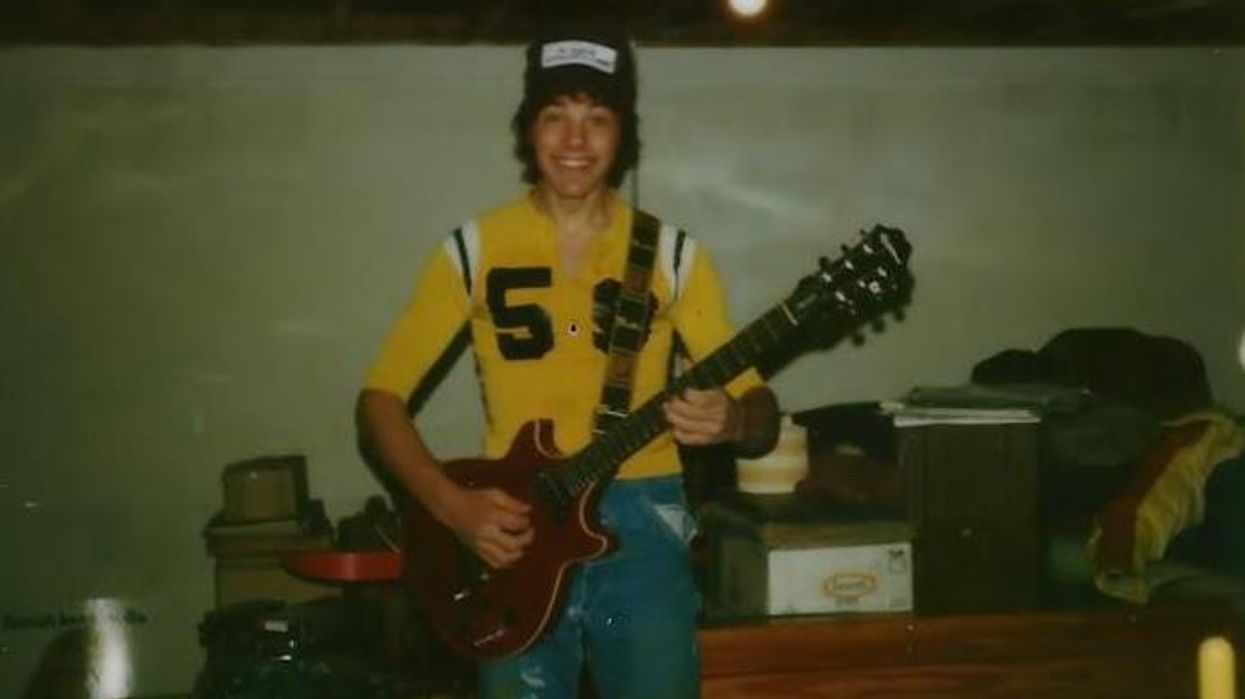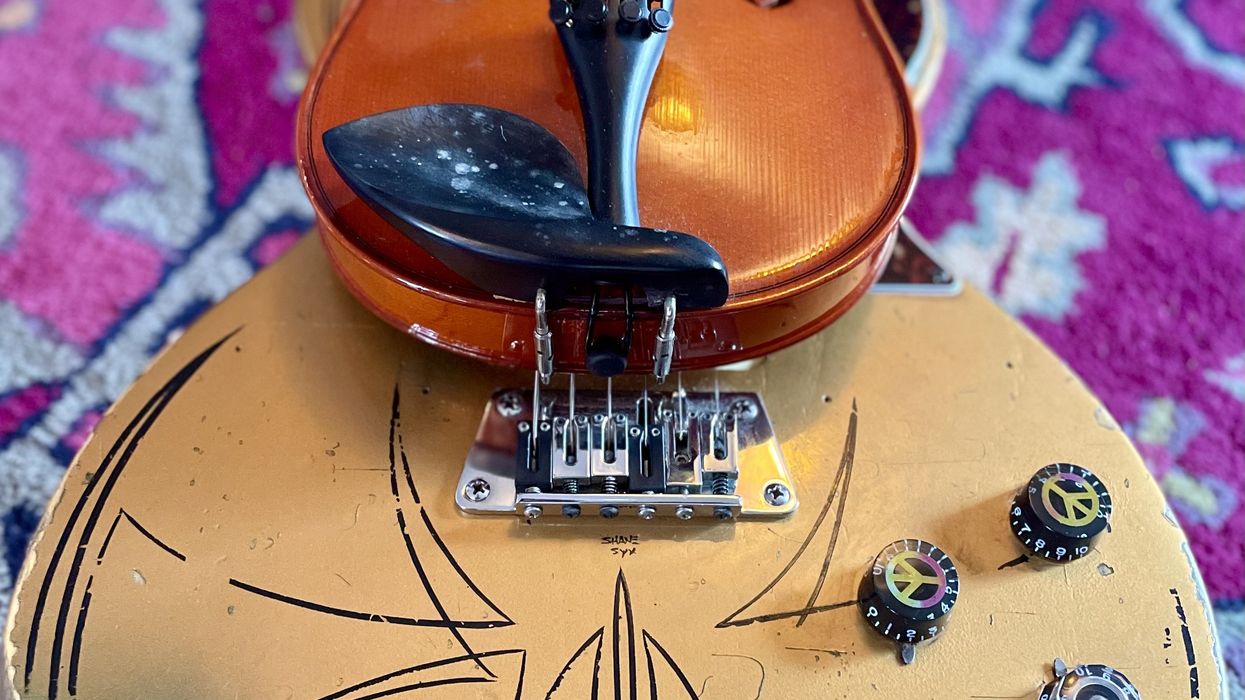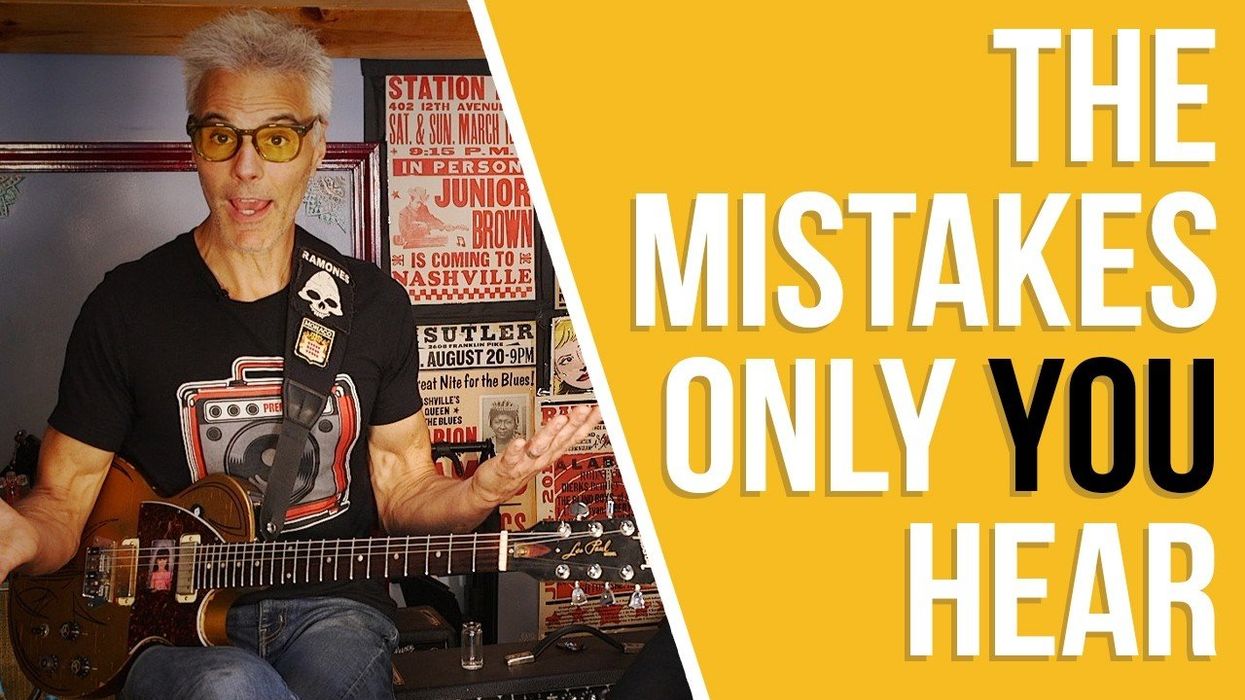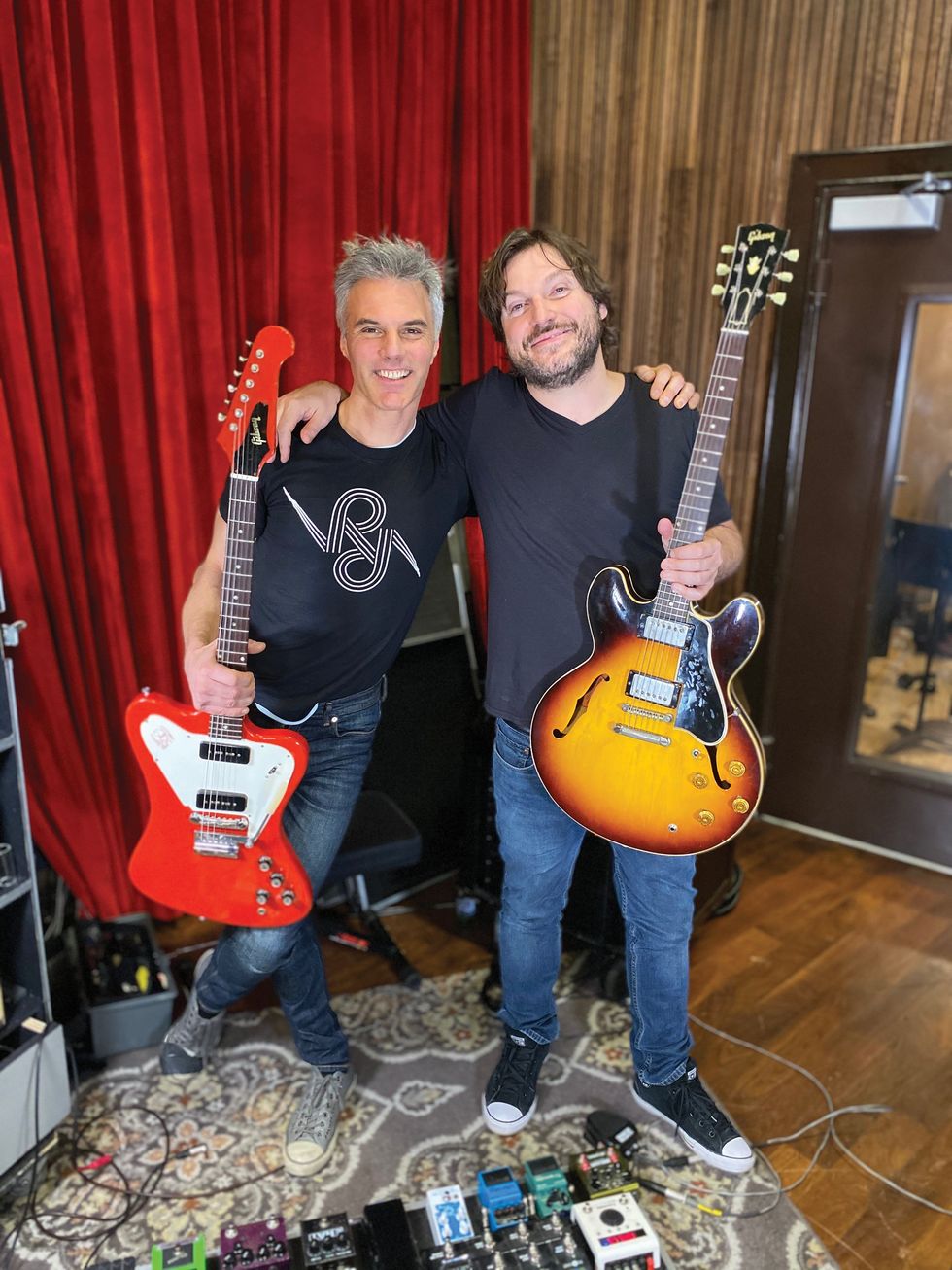You may have heard this before, but it bears repeating: The lion’s share of what we think of as “guitar speaker tone” comes from the cone. Specifically, it’s the complex movement across the cone’s surface that creates the tonal magic. More than anything else, the cone’s physical attributes—its shape, weight, density, and material—give a guitar speaker its unique sound.
A speaker used for sound reinforcement, such as a woofer you’d find in a venue’s PA, is made to be stiff and unyielding so it behaves as much like a piston as possible. This piston-like action—theoretically the “ideal” behavior for a loudspeaker—allows it to more faithfully reproduce the input signal, while adding a minimum of unwanted coloration.
A guitar speaker behaves very differently. To add complexity and desirable colorations to the output, we encourage resonances within the cone—we want it to “wobble about” rather than simply move back and forth. Imagine you’re throwing rocks into a lake: In a PA speaker, the cone’s movement is like a single rock hitting the water and creating concentric outward ripples. These resemble the predictable motion of a stiff cone moving forward and backward. But with a guitar speaker, the cone behaves more as if you’ve thrown a handful of pebbles into the water, thus creating a collection of interfering ripples. Complex patterns moving across the cone’s surface effectively add character and a broad coloration to the speaker’s sonic output.
For the guitar speaker designer, the challenge is to find the best ways to guide and control—and not interfere with—that complex pattern of vibration. To discourage flexibility in a PA cone, we add such materials as polyamide or glass fibers to the paper mix and then make the cone thick. The guitar speaker cone has no such stiffening agents and is made as thin as physically practical to better encourage the desirable vibration across the surface.
A consequence of the frequency of coil movement, a cone’s resonant flexing is the largest contributor to a speaker’s tonal signature. The better we are at designing and building the speaker, the more of the cone’s pure tonality we preserve and the fewer undesirable colorations we introduce into the output.
a lot more complicated.
Basically, we want the cone to vibrate in the most natural way possible. This requires careful consideration of how all the elements required to build the speaker, as well as the methods used to assemble it, will impact cone movement.
It takes considerable expertise to find the most sympathetic way to integrate the other constituent parts with the cone. In addition to selecting the most appropriate materials, we might consider the surround, the “springiness” of the suspension, and the size of the voice coil and dust dome. There are many other small elements to consider as well, and taken together they can have a noticeable impact.
We make these choices for practical reasons. For example, we’d select a particular voice coil to achieve a desired power-rating target. We know this choice will alter the overall sonic signature because of how it influences the cone’s movement, so the challenge is to ensure that the overall effect is positive.
At low frequencies, when the cone is vibrating in the “piston band,” it moves as a single entity. At higher frequencies, the movement gets a lot more complicated. As frequency increases, neighboring parts of the cone begin moving in opposite directions from each other and become decoupled. Known as modes of vibration, these movements are generally predictable because they, too, are resonant frequencies of the membrane. The frequencies at which this occurs are dictated by the weight, thickness, and density of the cone material, the cone shape, and the cone’s “boundary conditions” (how it’s clamped at the inner and outer edges). The cone will break up into radial modes that extend out from the center of the cone, as well as concentric modes that form circular patterns of movement on the cone surface.
A speaker’s parts all influence how the modes’ vibrations manifest themselves over the cone surface, and this is where we see the impact of a given design. We’re looking for a smooth transition between cone modes. This is what delivers a tone free of unpleasant and unwanted colorations. It’s the complex interaction of the cone’s vibrational characteristics, summed into one harmonious collection, that yields great tone. Ultimately, the best thing we can do is let that cone sing!


